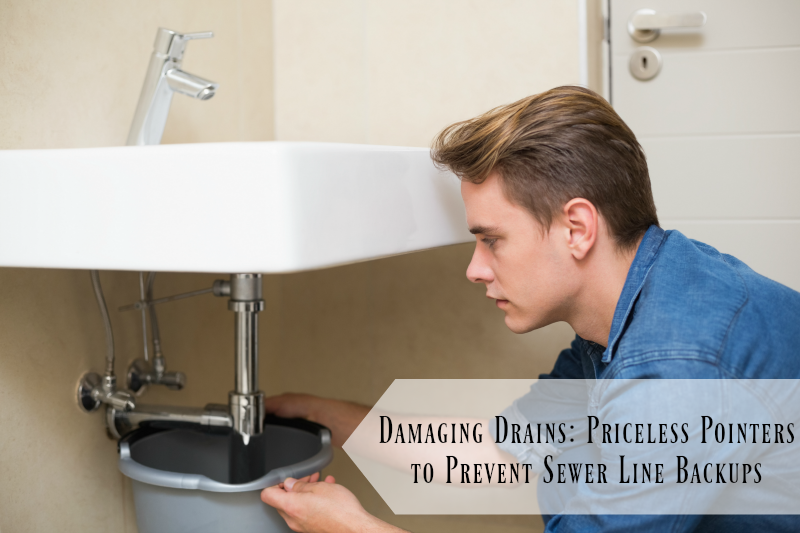One of the worst experiences homeowners can experience is a sewer backup or overflow. It’s usually foreshadowed by a pungent smell somewhere around the basement or back of the house, wherever the sewer entrance is. Avoiding this can be done through finding the main causes, grease and roots causing overflows.
Primary Causes
Grease is one of the largest offenders of causing a sewage problem. If cooking grease and other oils are put down the drain, eventual problems can occur. The grease will eventually cool down, build up and harden. This affects both home and local jurisdiction sewage lines. Overtime this problem builds up and causes blockage that can’t be avoided.
Plant roots are another unfortunate problem that is caused less by people and more so by the nature around us. Roots growing into the pipes are another major problem. Roots from major pants and trees will naturally go to the water source. As a pipe is slowly getting weaker through constant use, a root will find the smallest area of weakness and capitalize on that.
Quick Tips to Attack the Cause
One of the more common sense approaches is to simply not pour grease down the toilet or sink drains. Make sure scrape off all types of grease from all kinds of plates and utensils, instead putting them into the trash rather than down the sewage lines. Even plant roots can be taken care of. In order to avoid the root blockage, make sure no trees or shrubs are growing close to the sewage service line or home cleanout system.
If any of these major causes do in fact impair the sewage line, then there’s nothing proactive to do, but get the problem fixed. A water damage cleanup company will be able to come in and fix all of the damage. For most people they aren’t too focused on making sure their sewage is running okay until it’s too late. But there are other ways to keep a healthy sewer line before it comes to getting damage repaired.
Consistent Maintenance
Major cleanouts are direct lines to the sewer and clean up any blockages forming and eliminates that sewer gas smell. This may eliminate odors, which is usually the first sign of cloggage anyhow. Sometimes simply pouring some bleach down the drain can be of immense help.
Most people don’t know but there are usually two separate lines attached into a mainline from the house. One of those lines will carry from the “soil line that takes from the kitchen sink and toilet. While the other one will carry out the waste line from showers and bathroom sinks. What this means is there are two opportunities for potential blockage to occur from two separate lines coming from the house. One of the first parts of identifying any sewer line backup is to determine which line this is coming from.
Taking Action of the Pipes
We’ve mentioned that throwing some bleach down the drain can help at times. Often times it’s much more complicated than that. Experts say that just using a chemical drain cleaner shouldn’t be the only method of attack on a potentially blocked drain.
A sewer jetter has the capability of being able to blast away any potential blockage while also restoring and cleaning the innards of the pipes. After you’ve blasted away the insides, it’s a good time to follow up with what is called a hydrostatic line tester. Any existing leaks that might have been saved by the debris could have been washed away by you cleaning it. Being able to find the new unlocked leaks can be a good area to repair and prevent any new damage.
Simple Common Precautionary Methods
Instead of having to go full attack on the drains, there are simple things that should be added to any house cleaning regiment. One of these is pouring a cup of baking soda and white vinegar down the drain. Flush with warm water after an hour of sitting there. This combination will destroy any new buildup and works well for showers, kitchens and bathroom sinks.
Also be considerate of what you’re actually putting down these drains. Grease should never go down there as previous mentioned. But different foods can be hard for a garbage disposal to grind up and should be avoided. Never flush anything like rags, napkins or hazardous waste, metal objects down the toilet. Be conscious overall that these pipes are leading somewhere and are not indestructible.
John Madison is a retired plumber. Left with a little too much time on his hands, he was recently encouraged by his granddaughter to start sharing his knowledge by writing articles. So far he’s enjoying it, and hopes his articles are of use.
